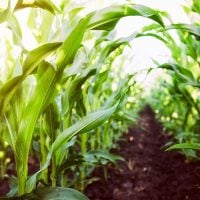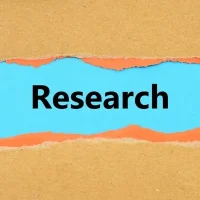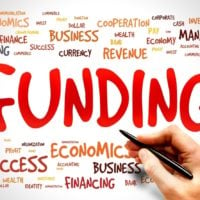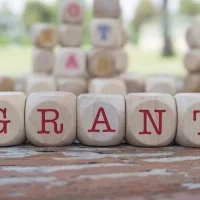The World Food Programme (WFP) stands as the leading humanitarian organization dedicated to combating hunger and promoting food security across the globe. Established in 1961, WFP operates under the auspices of the United Nations and has evolved into a critical player in addressing the multifaceted challenges of food insecurity, malnutrition, and emergency response. With a mission to eradicate hunger by 2030, WFP provides life-saving assistance to millions of people in need, particularly in conflict-affected regions and areas impacted by natural disasters.
The organization’s work is not only about delivering food but also about empowering communities through sustainable practices that enhance resilience and self-sufficiency. WFP’s operations span over 80 countries, where it serves diverse populations, including refugees, internally displaced persons, and vulnerable communities. The organization employs a multifaceted approach that includes direct food assistance, nutrition support, school feeding programs, and cash-based transfers.
By leveraging partnerships with governments, NGOs, and the private sector, WFP aims to create a world where no one goes hungry. Understanding WFP’s funding priorities and opportunities is essential for organizations seeking to align their initiatives with WFP’s mission and secure financial support for their projects.
Understanding the funding priorities of WFP
Emergency Response and Food Assistance
In emergency situations, the WFP prioritizes immediate food assistance to save lives and alleviate suffering. This includes providing food rations, cash transfers, and specialized nutritional support to vulnerable populations affected by crises.
Nutrition Programs and Development
In addition to emergency response, the WFP places significant emphasis on nutrition programs aimed at addressing malnutrition among children and pregnant or lactating women. These initiatives are designed to prevent stunting and promote healthy growth and development.
Building Resilience and Capacity
Furthermore, the WFP recognizes the importance of building resilience in communities to withstand future shocks. This involves supporting agricultural development, improving access to markets, and enhancing food systems to ensure long-term food security. By understanding these funding priorities, organizations can tailor their proposals to align with the WFP’s strategic objectives and increase their chances of securing funding.
Types of funding opportunities available from WFP
WFP offers a variety of funding opportunities to support its mission and the initiatives of partner organizations. One of the primary avenues for funding is through grants that are allocated for specific projects aligned with WFP’s goals. These grants can be used for a range of activities, including emergency food assistance, nutrition programs, capacity building, and resilience initiatives.
The funding is often provided on a competitive basis, with organizations required to submit detailed proposals outlining their project objectives, methodologies, and expected outcomes. In addition to grants, WFP also engages in partnerships with various stakeholders to mobilize resources for its programs. This includes collaborations with governments, international organizations, and private sector entities that contribute financial support or in-kind donations.
WFP’s innovative financing mechanisms, such as cash-based transfers and social protection programs, also provide alternative funding opportunities for organizations working on food security and nutrition. By exploring these diverse funding avenues, NGOs can identify the most suitable options for their projects and enhance their impact in the communities they serve.
Eligibility criteria for WFP funding
To access funding from WFP, organizations must meet specific eligibility criteria that ensure alignment with WFP’s mission and operational standards. Generally, eligible applicants include non-governmental organizations (NGOs), community-based organizations (CBOs), academic institutions, and other entities that demonstrate a commitment to addressing food security and nutrition challenges. Organizations must also have a proven track record of implementing successful projects in relevant sectors and possess the necessary technical expertise to carry out proposed activities.
Additionally, WFP prioritizes partnerships with organizations that can demonstrate strong governance structures, financial accountability, and effective monitoring and evaluation systems. Applicants are often required to provide documentation that outlines their organizational capacity, including financial statements, project proposals, and evidence of past performance. By understanding these eligibility criteria, organizations can better prepare themselves for the application process and position themselves as credible partners for WFP.
How to apply for funding from WFP
Applying for funding from WFP involves a structured process that requires careful planning and preparation. Organizations interested in securing funding must first identify relevant funding opportunities that align with their project goals. This can be done by regularly checking WFP’s official website and subscribing to newsletters or alerts that provide updates on available grants and partnerships.
Once a suitable opportunity is identified, organizations should develop a comprehensive project proposal that clearly outlines their objectives, target beneficiaries, implementation strategies, and expected outcomes. The proposal should also include a detailed budget that reflects the financial requirements of the project. After finalizing the proposal, organizations can submit their applications through WFP’s designated channels, which may include online portals or direct submissions to regional offices.
It is crucial for applicants to adhere to submission deadlines and follow any specific guidelines provided by WFP to ensure their proposals are considered.
Tips for a successful funding application to WFP
Crafting a successful funding application to WFP requires attention to detail and a strategic approach. One of the most important tips is to thoroughly understand WFP’s priorities and tailor the proposal accordingly. This means aligning project objectives with WFP’s strategic goals and demonstrating how the proposed initiative will contribute to addressing hunger and food insecurity in targeted communities.
Another key aspect is clarity and conciseness in writing. Proposals should be well-structured, with clear headings and logical flow that guides reviewers through the project concept. It is essential to articulate the problem statement effectively and provide evidence-based data that supports the need for intervention.
Additionally, including measurable indicators for success will help demonstrate the potential impact of the project. Engaging stakeholders in the proposal development process can also enhance the quality of the application. Collaborating with local communities, government agencies, and other partners can provide valuable insights and strengthen the proposal’s credibility.
Finally, organizations should ensure that they have robust monitoring and evaluation plans in place to track progress and report on outcomes effectively.
Reporting and monitoring requirements for WFP funding recipients
Once an organization secures funding from WFP, it becomes imperative to adhere to reporting and monitoring requirements set forth by the organization. These requirements are designed to ensure accountability and transparency in the use of funds while also providing valuable insights into project implementation and outcomes. Recipients are typically required to submit regular progress reports detailing activities undertaken, challenges faced, financial expenditures, and achieved results.
Monitoring is an ongoing process that involves collecting data on key performance indicators established during the proposal phase. Organizations must implement effective monitoring systems that allow them to track progress against targets and make necessary adjustments as needed. This not only helps in fulfilling reporting obligations but also enhances project effectiveness by enabling timely interventions based on real-time data.
WFP may also conduct site visits or evaluations to assess project implementation firsthand. Therefore, maintaining open lines of communication with WFP representatives is crucial for addressing any concerns or questions that may arise during the project lifecycle.
Additional resources and support available from WFP
WFP provides a wealth of resources and support for organizations seeking to enhance their capacity in addressing food security challenges. The organization offers technical assistance through training programs, workshops, and knowledge-sharing platforms aimed at building skills in areas such as proposal writing, project management, monitoring and evaluation, and donor engagement strategies. Additionally, WFP’s extensive network of partnerships can facilitate connections between organizations working in similar sectors or regions.
This collaborative approach fosters knowledge exchange and encourages innovative solutions to common challenges faced by NGOs in the field of food security. Organizations can also access research publications, toolkits, and best practice guidelines developed by WFP that provide valuable insights into effective programming strategies. By leveraging these resources, NGOs can strengthen their initiatives and contribute more effectively to WFP’s mission of eradicating hunger worldwide.
In conclusion, understanding the intricacies of funding opportunities from the World Food Programme is essential for organizations committed to addressing hunger and food insecurity. By aligning their initiatives with WFP’s priorities, adhering to eligibility criteria, crafting compelling proposals, fulfilling reporting requirements, and utilizing available resources, NGOs can enhance their chances of securing vital support for their projects while making a meaningful impact in communities around the globe.









































